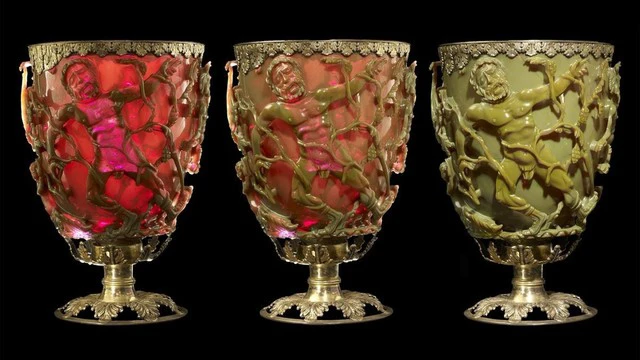The Lycurgus Cup is a captivating and enigmatic artifact that continues to fascinate historians, archaeologists, and art enthusiasts alike. Dating back to the 4th century AD, this remarkable Roman glass cup showcases a stunning color-changing effect that has baffled and delighted observers for centuries.
What makes this ancient masterpiece so special? Beyond its sheer beauty, the Lycurgus Cup represents a remarkable feat of ancient craftsmanship and a sophisticated understanding of materials that was centuries ahead of its time. In this blog post, we’ll delve into the history, construction, and significance of this dazzling relic, exploring how it provides a glimpse into the technical prowess and artistic vision of the Roman artisans who created it.
The Captivating Color-Changing Effect
The Lycurgus Cup’s most mesmerizing feature is its ability to change color depending on the direction and quality of the light. When viewed in reflected light, such as from a window or lamp, the cup appears a rich, opulent green. But when light shines through the glass, the cup transforms, glowing a deep, fiery red.
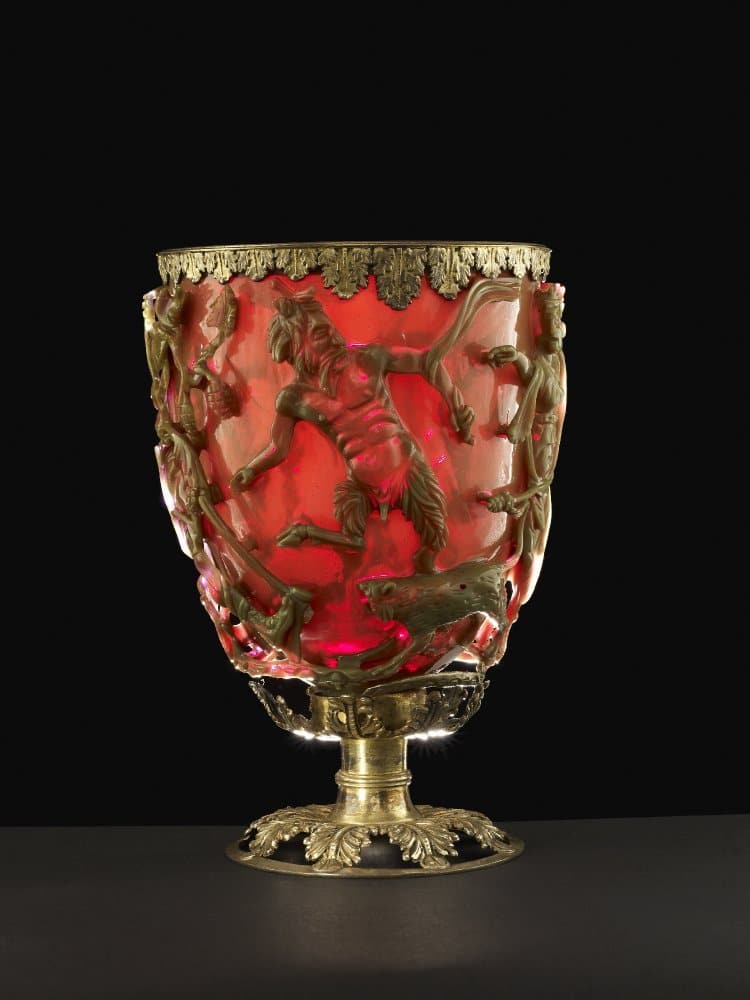
This captivating color-changing trick is the result of an ingenious inclusion of gold and silver nanoparticles in the glass. These tiny metal particles, measuring just 50 to 100 nanometers in diameter, interact with the light in a way that causes the dramatic shift in hue. In reflected light, the nanoparticles scatter the green wavelengths, giving the cup its emerald appearance. But when light passes through the glass, the nanoparticles absorb certain wavelengths, allowing the red and orange tones to dominate and produce the fiery glow.
This remarkable effect was likely a source of wonder and delight for the Romans who first laid eyes on the Lycurgus Cup. Imagine the awe and fascination of a Roman aristocrat, sipping wine from this mesmerizing vessel and watching it transform before their eyes. It’s a testament to the technical mastery and innovative spirit of the ancient Roman glassmakers who created this captivating piece.
The Intricate Cage Cup Design
But the Lycurgus Cup is more than just a pretty party trick. It is also a masterpiece of ancient craftsmanship, showcasing the exceptional skill and artistry of its creators.
The cup is classified as a “cage cup,” a type of Roman glass vessel characterized by an outer layer that is meticulously carved or cut into a decorative design. In the case of the Lycurgus Cup, this outer layer depicts a dramatic scene from Greek mythology – the story of King Lycurgus of Thrace.

According to the legend, Lycurgus was a cruel ruler who defied the god Dionysus, the god of wine and revelry. As punishment, Dionysus caused vines to ensnare and entrap Lycurgus, symbolizing the dangers of opposing the divine order. This vivid scene is painstakingly carved into the outer glass layer of the cup, creating a captivating three-dimensional effect.
The level of detail and craftsmanship required to create this intricate, sculptural design is truly remarkable. Each tendril of the vines, each fold of Lycurgus’ robes, and each expressive feature of the king’s face was meticulously carved by skilled Roman artisans using specialized tools. The final result is a stunning work of art that showcases the technical mastery and artistic vision of its creators.
A Sophisticated Understanding of Materials
What makes the Lycurgus Cup even more impressive is the fact that it represents a level of material science and engineering that was centuries ahead of its time. The inclusion of the gold and silver nanoparticles that enable the color-changing effect is a testament to the Romans’ sophisticated understanding of the properties and behavior of materials at the nanoscale.
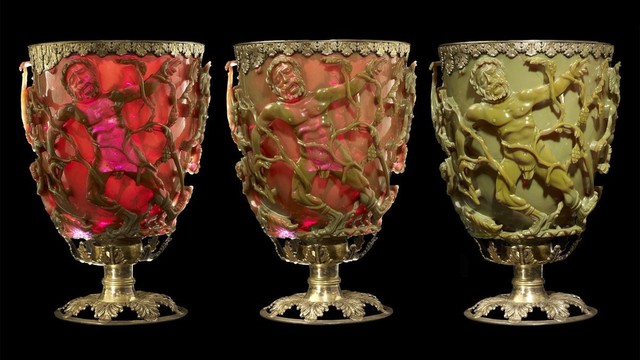
The fact that these tiny metal particles, invisible to the naked eye, were intentionally incorporated into the glass formula is a remarkable achievement. It suggests that the Roman glassmakers had a deep comprehension of how the interaction between light and these nano-sized materials could produce the desired optical effect.
This level of material science understanding is often associated with modern nanotechnology, which has only emerged as a field of study in the last few decades. Yet here we have evidence that the ancient Romans were experimenting with and harnessing the properties of nanomaterials long before the term “nanotechnology” was even conceived.
In this sense, the Lycurgus Cup represents a remarkable technological and scientific accomplishment that was centuries ahead of its time. It’s a humbling reminder that the ancients were far more advanced in their understanding of the natural world than we often give them credit for.
The Enduring Mystery and Legacy of the Lycurgus Cup
Despite the wealth of information we have about the Lycurgus Cup, many aspects of its history and creation remain shrouded in mystery. Where did the raw materials come from? How exactly was the glass formulated and the nanoparticles incorporated? What was the original purpose and function of this remarkable vessel?
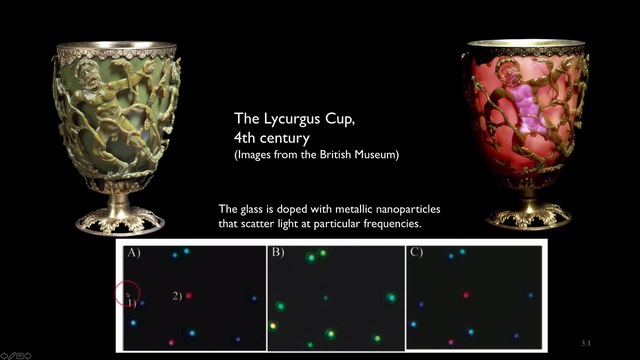
These questions continue to intrigue and captivate scholars and enthusiasts alike. The Lycurgus Cup stands as a testament to the incredible ingenuity and technical mastery of the ancient Roman civilization, and a reminder that there is still so much we have yet to uncover about the capabilities and innovations of the past.
As we continue to study and admire this remarkable artifact, the Lycurgus Cup serves as a powerful symbol of the enduring legacy of ancient craftsmanship and a humbling acknowledgment of how much we still have to learn from the wisdom and achievements of our ancestors. It is a true marvel that continues to inspire wonder and awe in all who behold its captivating color-changing display.
Conclusion
The Lycurgus Cup is a breathtaking example of the technical prowess and artistic vision of the ancient Roman civilization. From its mesmerizing color-changing effect to its intricate sculptural design, this remarkable glass vessel represents a remarkable feat of craftsmanship and material science that was centuries ahead of its time.
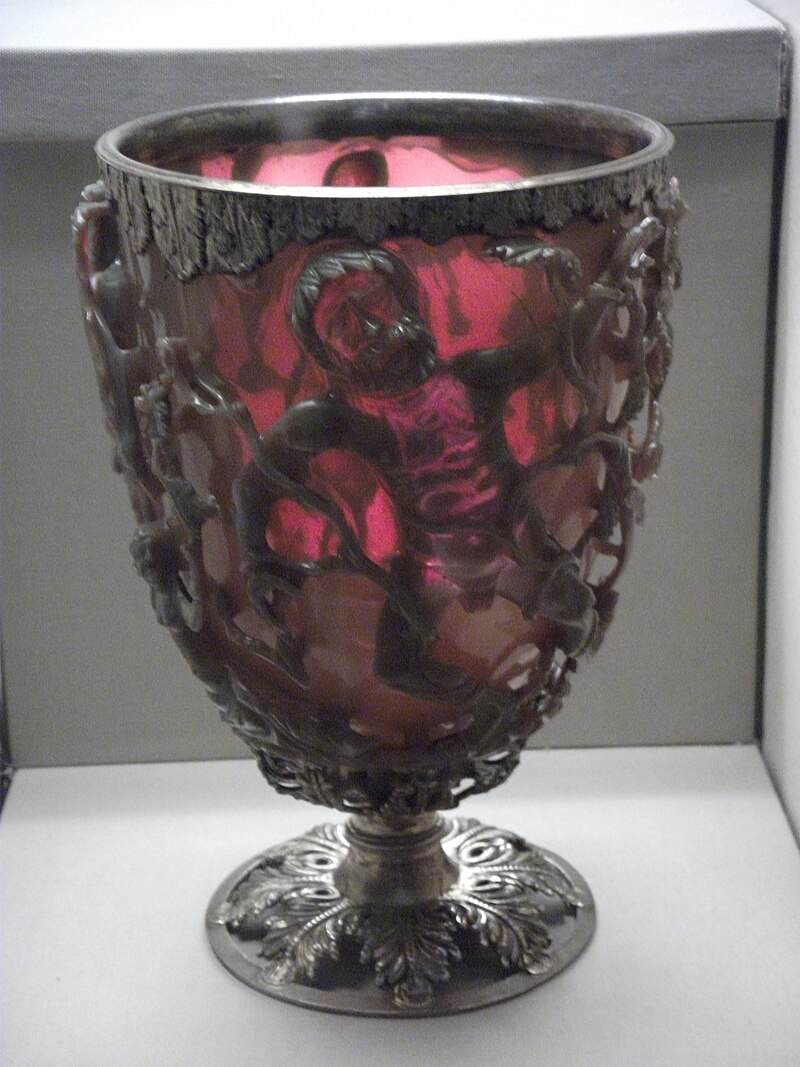
As we continue to study and appreciate this captivating artifact, the Lycurgus Cup stands as a testament to the incredible ingenuity and innovative spirit of the ancient world. It is a humbling reminder that there is still so much we have yet to uncover about the capabilities and achievements of our ancestors, and that we have much to learn from their remarkable accomplishments.
Whether you’re a historian, an art enthusiast, or simply someone captivated by the mysteries of the past, the Lycurgus Cup is a true marvel that is sure to inspire wonder and awe. So the next time you have the opportunity to see this dazzling relic in person, be sure to take a moment to bask in its captivating glow and ponder the incredible story it has to tell.
